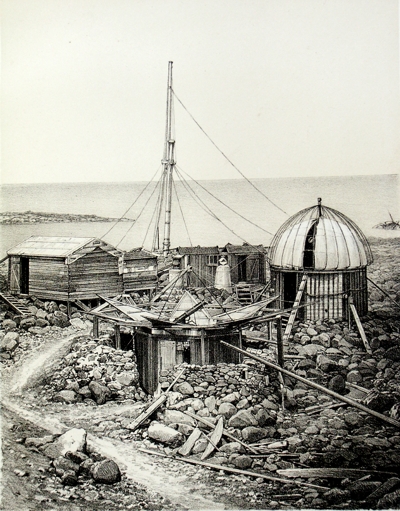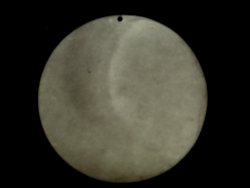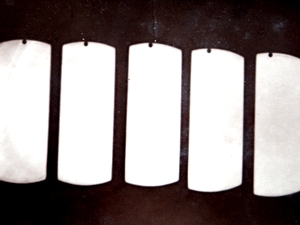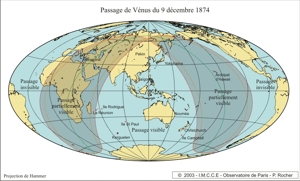
In one century, technical progress was important, in particular with the contribution of the photographic recording, the improvement of the clocks and the best knowledge of longitudes. The observation of the passage of 1874 was possible from China (Peking), Japan (Nagasaki), in the Asian North-East and in Australia.
The English under the direction of the royal astronomer Sir George Airy organized five missions distributed out of eight observation stations: one in Egypt in Alexandria, one in the Rodrigues island (become English), one in New Zealand in Christchurch, two in the Kerguelen islands at Port Christmas at the site of Bay of the Observatory and in Port Palliser and three in the islands Sandwich (currently archipelago of Hawaii) in Honolulu, Owhyhee and Atoui. To these missions it is advisable to add the private voyage of Lord Lindsay to Mauritius.
In Russia the phenomenon was visible and was observed from 24 stations distributed on a great part of the going territory from the sea of Japan to the Black Sea.
The French, organized six missions; three in the boreal hemisphere, including
a mission to China in Peking directed by Fleuriais, one in Japan entrusted
to the astronomers J. Janssen and F. Tisserand, one in Indo-China in Saigon directed
by Héraud and, three in the southern hemisphere, of which one in the
Campbell island entrusted to Bouquet of Grye, one in the Saint-Paul island entrusted
to the commander Mouchez and finally one in New Caledonia at Nouméa
entrusted to André. On this occasion, Janssen had invented a kind of
"photographic revolver" with which it took 48 stereotypes of the Venus
passage on a plate circular daguerreotype.

 |
|
| Photographic stereotype taken at Saint-Paul (© IMCCE) |
|
 |
|
| Series of photographic stereotypes of the Venus
passage taken atSt-Paul (© IMCCE) |
|
It is advisable to note three other voyages, two germans, one at Mauritius and the other at the Kerguelen islands (the Anse Betsy) and an american mission also in the Kerguelen islands.
 |
| Visibility of the passage of 1874, projection of Hammer |